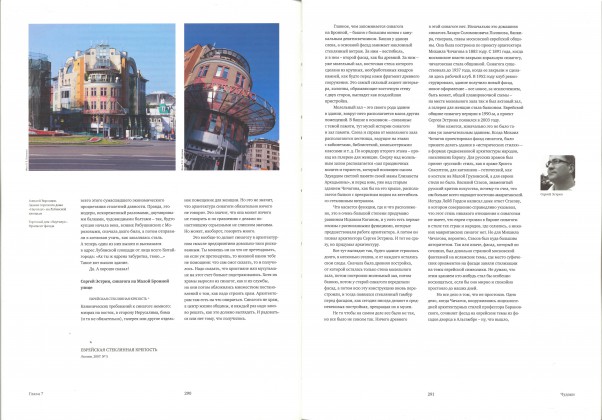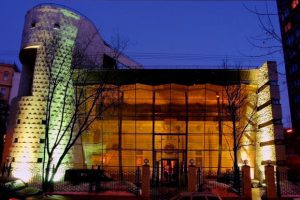Jewish glass fortress. | Grigory Revzion. Russian architecture on the edge of 20th-21st century.
This book is about Russian architects of post-soviet area.
“Yet, it is not a grim space. Quite the opposite. Daniel Libeskind Jewish Museum in Berlin has created a design where walls were trimmed with cuts. The space is most tragic. Sergey has similar cuts along corridor ceilings. Yet with Libeskind there is darkness. And here there are lamps, plenty of light. Maybe this is it, maybe not. Here I am talking about those intangible qualities of architecture that are elusive and vague. This is Hasid Synagogue; it is such a warm space. Not as much triumphal as everyday joyful. When looking through narrow slit-like windows into surrounding city, there is no feeling of being in besieged fortress awaiting for assault. It feels like shivery Moscow day while you are at home where there is light. I do not quite understand how it is possible to combine this idea of reliquary with fortress image, but it clearly is. To be honest, I am rather glad that I do not understand it. There should be something not entirely perceivable about good architecture. Some things are there just to feel deeply.”




